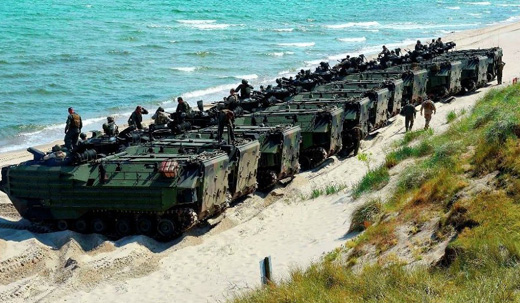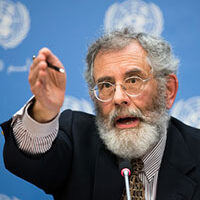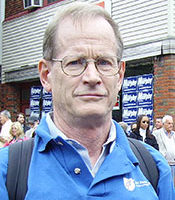
NATO recently wrapped up “Anakonda-16,” the largest military exercise in Eastern Europe since the end of World War II. The ten-day war games involved 31,000 troops from 24 countries, including 14,000 from the U.S. While NATO made no secret of its actions, the exercise went largely unremarked in the U.S. media.
Building a military advantage against Russia has of course been one of the intended consequences of the U.S.-sponsored overthrow of the democratically-elected government of Ukraine in 2014 (achieved with the help of the neo-Nazi storm troops of the far-right Svoboda party). The coup created an unelected Ukrainian government in Kiev that immediately threatened the rights of the ethnically Russian population in eastern Ukraine and the centuries-old Russian naval base in the Crimea.
The people of that province voted to secede from Ukraine and asked to be annexed by Russia, to which the latter agreed. The other eastern provinces also revolted, prompting authorities in Kiev to send troops to try to retake control.
The U.S. denied any responsibility for the breakup of Ukraine, placing blame on Russia and its President Vladimir Putin. The Administration and the State Department pressed its European allies to install economic sanctions on Russia in the aftermath of the Crimea referendum. The U.S. also paraded armored columns of troops throughout the countries bordering Russia and has begun installing nuclear first-strike missiles in Poland and Romania.
Despite the U.S. media largely ignoring it, NATO’s Anakonda exercise caught the attention of security analysts and observers who have charged that the alliance and the U.S., in particular, are goading Russia into a new Cold War, revving up a new arms race to benefit the military industrial complex and possibly pushing the world towards a third world war.
Even German Foreign Minister Frank-Walter Steinmeier, speaking at the close of the exercises, characterized them as “warmongering.” He warned that “saber-rattling” and “symbolic tank parades” on NATO’s eastern border were no way to make Europe more secure. He went on to say that pursuing partnership with Russia on pressing international issues would yield positive results, citing the recent Iran nuclear deal as an example of the possibilities. He specifically mentioned the need for cooperation in the fight against “radical Islam” in the Middle East as a pressing and urgent matter.
Security analysts have emphasized the contradictory position of the Obama Administration in the current pressure cooker-like atmosphere of international relations. On the one hand, the Administration at times appears to be under the sway of “neocon” hawks from the Bush-Cheney era who have moved back into positions of influence in the foreign policy apparatus. This is especially the case with policy toward Russia, where the neocons have pushed for an aggressive stance in that country’s border regions. It is also important to note that President Obama’s first secretary of State, Hillary Clinton, is considered by most to be more hawkish than her former boss on the assertion U.S. power abroad, and the neocon elements are eager to curry favor with her.
On the other hand, the Obama Administration badly needs a “success” in the war in Syria, a result which can only be reached by cooperating with Russia and President Putin. This is yet another war inflamed by the United States and its Middle East allies Saudi Arabia, Turkey, Qatar, and Jordan. A number of the latter countries have poured fundamentalist terrorists, weapons, and money into Syria in an effort to overthrow the government of Bashar al-Assad, thus replicating a frequent pattern of U.S. policy. NATO member countries have joined in waging the war on Syria.
NATO is holding a summit meeting in Warsaw, Poland on July 8 and 9. Is its purpose to plan even more wars?
Under these circumstances, peace forces in the U.S. have a critical responsibility to oppose NATO’s aggressions. There are important anti-NATO demonstrations taking place in Europe, for example in Cyprus, Portugal and the Czech Republic. As the NATO summit is going on, there will be anti-NATO activities in Warsaw and New York. A major “No to NATO, No to War” demonstration is being sponsored by a broad array of organizations for July 9 at the Army Recruiting Center in Times Square, NYC, to protest the NATO summit in Warsaw.
Despite the fact that the U.S. is already engaged in seemingly endless military campaigns in a number of countries, hardly any time is being devoted in the 2016 election campaign to discussing the costs of war and the need for peaceful solutions. The peace movement’s anti-NATO actions are part of an effort to inject a peace platform into the public discourse.
Photo: Military vehicles participate in NATO’s Anakonda-16 war games in June 2016. | Flickr/U.S. Naval Forces











